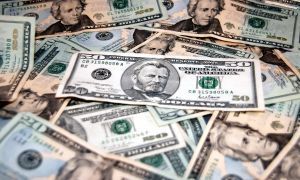Social stratification exists in America because the wealth and power belongs to a small portion of the population. Wealthy people possess an enormous amount of power over the political system and are held in high esteem by our society. There is a general feeling that those who are wealthy and powerful are superior to the average person. Social stratification involves not only socio-economic inequality, but the belief system held by people in America.
A stratified society exists when there is an unequal distribution of wealth, power and prestige. In American society, political power and wealth are not distributed equally (Johnson, 1996). Paul Krugman is an economist and author of the book, ‘The Spiral of Inequality’ (1996). Krugman believes corporate greed, the decline of organized labor and changes in the way goods are produced are the causes of the growing social and economic inequality in the United States (Anderson, 2003). There is an unspoken general agreement in America that certain occupations deserve higher wages and more respect. Professions, such as physicians, lawyers, athletes and actors, are held in high esteem, whereas custodians, waitresses and trash collectors are considered professions that are not worthy of respect or praise and require minimal skill or intelligence. America most definitely needs skilled physicians and lawyers, but it also needs custodians, trash collectors and others who perform much needed tasks in order for society to thrive and function properly.
Due to declining wages in the United States, the inequality of wealth and income is growing (Marshall, 1998). The minimum wage in America has not kept up to the cost of living or median wage (Acs & Gallagher, 2000). A large percentage of working Americans live in poverty. In fact, the gap between the wealthy and poor is greater now than at any time since World War II. The gap between the wealthy and poor in the United States is larger than any other industrialized country in the world. From 1968 to 2000, the real value of minimum wage dropped 35%. The real value of the average American citizen dropped 2.6%. During this same time period, corporate profits have escalated 64.4% and retail profits have escalated 158.3%. In the year 2000, the minimum wage, in the United States, was $5.15 per hour. If minimum wage had kept up with domestic profits during this time, minimum wage would have been $13.02 in the year 2000 (Anderson, 2003).
According to a report released in 1989 by the United States Federal Reserve, 40% of the nation’s wealth is owned by 1% of the population. Of that 1%, each of those individuals had a net worth of 2.3 million dollars or more. A 1979 Carnegie study, led by Richard DeLone, found that a child’s future is not determined by their intelligence, but instead is determined by their social status. This Carnegie study confirms that many children are not being given the opportunity to attain their full educational potential due to their social class (Kearl, 2006). Those who are poor do not have access to the same resources, such as education and healthcare, which are accessible to the wealthy. The wealthy are able to afford to provide their children with a good education and excellent healthcare. It is evident that individuals who are poor do not have the same opportunities as wealthy individuals.
In industrialized societies, the salaries individuals earn directly reflect the market. It is a case of supply and demand. This is the reason why many actors and athletes earn a great deal more money than a custodian or waitress. Actors and athletes are in demand. People want to be entertained and enjoy being entertained, so they regard actors and athletes as superior to the average person. Many political leaders in America had lofty paying, authoritative, powerful jobs before entering into politics. Most of these individuals return to high paying, powerful positions when they leave their political positions. In 2001, George W. Bush, was in the process of recruiting people to be part of his Cabinet. With the exception of one person, all of the people Bush chose were millionaires before accepting their Cabinet positions (Macionis, 2003).
The Dominant Ideology Thesis maintains that there are opportunities available to everyone. According to this theory, every individual is responsible for their own successes and failures in their lives. All individuals are able to rise in the order of stratification via hard work and individual talents and abilities. The Dominant Ideology theory does not consider stratification is due to economic factors. Those who agree with this theory assert that the distribution of wealth is fair and just and so inequality is viewed in a positive way (Kluegal & Smith, 1981). Many individuals in America agree with this philosophy. They believe that any person who is willing to work hard can achieve success, and if someone does not succeed, it is their own fault for putting forth enough effort or not working hard enough. They blame people who are poor for not being able to secure better jobs so they can earn more money. Individuals in America who are poor are often thought of as lazy, uneducated, immoral and lacking motivation to succeed in life
(Kluegal & Smith, 1981). People in America tend to assess others by the type of work they do and how much wealth they possess.
E.R. Smith and J.R. Kluegal assembled data from a variety of American and Great Britain researchers in order to better understand beliefs about social stratification. Their findings illustrate that beliefs about inequality vary depending on whether an individual is affluent or poor. According to the research they collected, the majority of affluent individuals believe that poor people are in some way responsible for their own circumstances. Many poor individuals view society and the political system as the reason for the inequalities that exist. It appears that the greater an individual’s income, the more optimistic they are about the current economic shape of the America. Wealthy individuals also view the government and political policies positively, whereas individuals, who are poor, do not view the economy or government in a positive manner (Kluegal & Smith, 1981).
Social stratification is a basic component of social organization in all human societies. Whenever individuals live together, there are interpersonal and inter-group relations which include dominance and submission and levels of hierarchy (Cancian, 1976). One reason stratification exists in America is the upper class have the clout to obtain goods they need or desire and to retain these goods because of their capacity to control governments and other institutions within society. In most cases, wealthy individuals are more educated and obtain authoritative positions. The wealthy are able to financially sustain universities and make monetary contributions to political candidates. Due to their social position in society, the wealthy are able to assert their beliefs and way of thinking, which keeps them in their elevated positions and at the same time, maintains people in lower classes in their positions. The government is biased toward individuals who are in higher social classes and listen more to their opinions and suggestions than to middle-class or lower-class individuals (Brotz, 1959).
Another reason stratification exists is that it is accepted by all social classes. Many affluent individuals do not pay their fair share of federal, state or local taxes. They are able to take huge deductions and tax exemptions every year. The wealthy are also able to influence the laws that are approved by the government, so they help enact laws that benefit those with more money. Throughout Ronald Reagan’s administration, there were many tax law changes which clearly benefited the wealthy. These changes in the tax laws caused the tax burden to shift from the highest income families to the lowest income families (Johnson, 1996).
There are several theories that endeavor to elucidate the function of social stratification. The Structural Functional Paradigm asserts that a society needs to have inequalities for it to operate successfully. Kingsley Davis and Wilbert Moore maintain in their thesis, called the Davis-Moore Thesis that social stratification is very valuable and benefits the general public as a whole. The Davis-Moore thesis maintains that occupations that necessitate expert skills and talents or occupations that necessitate advanced education or training should reward workers with more money than occupations that do not involve particular skills or training. They consider individuals who work in unskilled positions do not merit the same rewards and benefits as those who work in specialized jobs (Macionis, 1995).
Whenever a society produces a surplus of goods, there will be individuals who will be in a position to obtain more than others. These individuals will become wealthy, powerful and dominant in the society. They will create and preserve a social system in which they will be able to retain their wealth and power. In order for them to sustain their high positions, they will control and take advantage of individuals in lower positions (Cancian, 1976).
Many industrialized societies believe in meritocracy. Meritocracy is the belief that social stratification in a society is based on an individual’s worth. In the United States, many people accept the ‘American Dream’ to be within reach of everyone. They believe that if you work hard, you can achieve power and wealth. By believing in meritocracy, inequalities seem more tolerable to people. People are able to justify, in their own minds, that if people live in poverty, it is their own fault by not working hard and climbing up the social ladder to be successful. This conviction makes a society more stable. The belief in meritocracy benefits the affluent portion of the population. Individuals who are wealthy and successful consider themselves superior to those who are less fortunate. When the wealthy compare themselves to others who are not as successful, they feel an enormous sense of satisfaction and self-esteem and exploit those who are less fortunate to validate their supremacy (Stokes, n.d.).
The most significant factor in upward mobility is education. The dilemma is that not everyone has an equal opportunity to attend college and advance their education. Two-thirds of children from families with incomes of fifty thousand dollars or more go to college. That number drastically drops to one-fourth of children attending college whose parents earn less than twenty thousand dollars a year. So, although there is evidence a college education is crucial for upward mobility, being able to attain a high-quality education is, for the most part, dependent upon the income parents earn. Even if an individual receives a college education, it does not assure them they will be wealthy. The social class a child is born into also affects the amount they will earn when they become adults. Bowles and Nelson conducted research which showed, even if children have equal IQ’s when they begin school and even if they are able to obtain a college education, they do not always end up earning equal incomes, as those who were born into a higher social class (Johnson, 1996).
In the 1980’s, A. C. Kerckhoff conducted a study on social mobility. Kerckhoff surveyed two thousand middle class men between the ages of thirty-five and forty-five regarding their occupations and also inquired about their father’s occupations. The study concluded that 75% of the time the sons ended up in the same social class as their fathers. Only twenty percent had moved upward or downward significantly (Stokes, n.d.).
People who are affluent are admired and have power over others. The majority of wealth in the United States is controlled by a small portion of the population. These individuals also possess the power to enact influence over political policies. Most of the men, who have been president of the United States, have come from families that were considered middle or upper class. Due to their power and position in society, those who are wealthy are able to enact changes in government by providing hefty financial contributions to organizations that affect policy changes (Johnson, 1996). At one time, power was held by public institutions, but now the power is controlled by large bureaucracies and small, affluent, private groups that are very influential (Long, 2005). Individuals, who are wealthy and powerful, have a tendency to stay in positions of power, even if they change jobs.
C. Wright Mills was a sociologist and social critic who believed that in the United States, a small group of individuals control the political system. He termed this group the ‘power elite’. Mills declared that the power elite controlled the government, military and economy in the United States. The power elite group consists of the small portion of people who are exceedingly wealthy. Power elite theorists have questioned if the United States is actually a democracy because the typical middle-class or lower-class citizen is not listened to or heard equally by the government due to the immense power held by the wealthy (Macionis, 2003).
In conclusion, social stratification endures in America for a variety of reasons. The affluent are very influential and govern the economic and political lives of all citizens. Economic benefits are not distributed equally. Individuals that are poor do not have access to the same resources as wealthy people. Social stratification also continues because of the belief system held by individuals in America. Social stratification is justified in society by cultural beliefs. From social inequality and beliefs, to the merit system and power, social stratification exists for many reasons which all ultimately lead back to wealth and power.
References:
Acs, G. & Gallagher, M. (2000). Income inequality among america’s children.
Anderson, R. (2003). Inequality: social class.
Brotz, H.M. (1959). Social stratification and political order. American Journal of Sociology. 64 (6), 571-578.
Cancian, F. (1976). Social stratification. Annual Review of Anthropology. 5, 227-248.
Johnson, A. (1996). Human arrangements: an introduction to sociology. (4th ed.).
Chicago, IL: Brown & Benchmark.
Kearl, M. (2006). Explorations in social inequality.
Kluegal, J.R., & Smith, E.R. (1981). Beliefs about stratification. Annual Review of
sociology. 7, 29-56.
Long, R. (2005). Social class (stratification).
Macionis, J. (1995). Social stratification. Prentice-Hall Inc.
Macionis, J. (2003). Sociology. (9th ed.). Upper Saddle River, N.J: Prentice Hall.
Marshall, R. (1998). Is the socio-economic system the model for other countries?. USIA
Electronic Journal, 3(1).
Stokes, R. (n.d.). Stratification.








